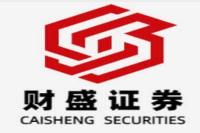Boosting China's Consumption: A Deep Dive into the Latest Economic Initiatives
Meta Description: China's consumption market, first-mover economy, consumer spending, ice and snow economy, silver hair economy, digital consumption, boosting consumption, policy initiatives, consumer stimulus.
This isn't just another news piece regurgitating press releases. Oh no, my friend! We're diving deep into the heart of China's ambitious plans to supercharge its consumer market. Forget dry statistics; we're talking about the real-world impact of these initiatives – the ripple effect on businesses, the tangible benefits for consumers, and the strategic brilliance (or potential pitfalls) of China's economic strategy. We'll unpack the government's latest announcements, analyze their implications, and even speculate on what this all means for the future of Chinese consumption. Think of this as your insider's guide, expertly crafted by someone who's been following these trends closely. Get ready for a comprehensive look at the "trade-in" programs, the "ice and snow" frenzy, and the innovative ways China is aiming to create a vibrant, dynamic, and incredibly lucrative consumer landscape. We'll explore the "silver hair" economy, the potential of digital consumption, and the overall goals of sustainable and healthy growth. This isn't just about numbers; it's about people, businesses, and the future of one of the world's most captivating economies. Prepare to be amazed, informed, and maybe even a little inspired by the sheer scale and ambition of China's plans.
China's First-Mover Economy: A Catalyst for Consumption?
The recent announcements from China's Ministry of Commerce (MOFCOM) paint a vivid picture: a relentless push to ignite consumer spending and solidify China's position as a global economic powerhouse. The buzzwords are everywhere – first-mover economy, ice and snow economy, silver hair economy – each representing a strategic lever to pull in the pursuit of robust economic growth. But are these just catchy phrases, or do they reflect a genuine and sustainable strategy? Let's delve into the details.
The MOFCOM's strategy rests on several key pillars, each designed to complement and amplify the others. It's a holistic approach, not a scattershot attempt at stimulating growth. This isn't about quick fixes; this is about building a sustainable, long-term engine of economic prosperity.
The "Trade-in" Revolution: The expansion of the "trade-in" program for consumer goods is a smart move. It directly injects capital into the hands of consumers, encouraging them to upgrade their products and, crucially, spend more. This isn't just about replacing old appliances; it’s about fostering a culture of continuous consumption – a virtuous cycle that benefits manufacturers, retailers, and ultimately, the economy as a whole. Think of the cascading effect: a new refrigerator purchase means new delivery jobs, potential home improvement projects, and increased revenue for the retailers involved.
Beyond the "Trade-in": A Multi-pronged Approach
The MOFCOM's strategy goes far beyond simple trade-in programs. Several other initiatives are designed to synergistically boost consumption:
-
Seasonality and Specificity: Targeting specific seasons with tailored events—like the Ice and Snow Consumption Season and the National Online New Year's Goods Festival—shows a keen understanding of consumer behavior. It’s not just about spending; it’s about creating memorable experiences and associating positive emotions with consumption. This is a game-changer in terms of marketing.
-
Service Sector Surge: The focus on expanding service consumption is also crucial. Services represent a significant portion of developed economies, and China is clearly aiming to tap into this potential. This could involve anything from promoting tourism to boosting the healthcare sector – all areas with massive growth potential.
-
Nurturing Emerging Sectors: The emphasis on cultivating the "first-mover economy," "ice and snow economy," and "silver hair economy" reveals a forward-looking strategy. These are areas with immense untapped potential, and by actively fostering their growth, China is positioning itself at the forefront of innovation and future trends. It's a proactive, not reactive, approach.
The "Silver Hair" Economy: A Demographic Dividend
The "silver hair" economy, targeting the burgeoning elderly population, is particularly insightful. This demographic represents a massive consumer base with unique needs and preferences. By catering specifically to this group, China can unlock a significant source of economic activity and simultaneously address the societal challenges of an aging population. Think specialized healthcare services, tailored travel packages, retirement communities – the potential is enormous.
Digital Consumption: The Engine of the Future
The MOFCOM's commitment to digital consumption is a nod to the inevitable shift towards a digitally driven economy. E-commerce and digital payments are already transforming how consumers interact with businesses, and by supporting this shift, China is ensuring it remains at the cutting edge of global commerce.
Improving Infrastructure: Making it Easier to Spend
The plan also touches on improving infrastructure, focusing on building "15-minute convenient living circles" and upgrading county-level commercial areas. This isn't just about convenience; it's about making consumption easier and more accessible to a wider population. This grassroots approach is crucial for inclusive growth.
Challenges and Considerations
While ambitious and well-intentioned, the MOFCOM's plans aren't without potential challenges. Maintaining sustainable growth, managing inflation, and ensuring equitable distribution of benefits will require careful monitoring and adjustments along the way.
Key Policy Initiatives: Decoding the Government's Strategy
The MOFCOM's strategy isn't just a vague aspiration; it's backed by concrete policy initiatives. Let's break down some of the key elements:
| Policy Initiative | Key Features | Expected Impact | Potential Challenges |
|--------------------------------------|------------------------------------------------------------------------------|---------------------------------------------------------------------------------|--------------------------------------------------------------|
| Consumer Goods Trade-in Program | Expanding scope, providing greater incentives | Increased consumer spending, boost to manufacturing and retail sectors | Ensuring program integrity, managing logistics |
| Ice & Snow Consumption Season | Targeted events, promotion of winter sports tourism | Boost to tourism, winter sports equipment industries, related service sectors | Weather dependence, regional disparities |
| National Online New Year's Goods Fest | Online shopping promotion, targeted discounts | Increased e-commerce sales, digital economy growth | Maintaining cybersecurity, managing logistics and delivery |
| Service Consumption Expansion | Policy support for service businesses, promoting diversity | Job creation, economic diversification, enhanced consumer experience | Competition, regulatory complexities |
| First-Mover Economy Initiatives | Support for innovative businesses, fostering new industries | Economic diversification, creation of high-value jobs, technological advancement | Risk, uncertainty, requiring significant investment |
| "15-Minute Convenient Living Circles" | Development of localized commercial hubs | Improved consumer convenience, support for local businesses, enhanced quality of life | Land acquisition, coordination among stakeholders |
Frequently Asked Questions (FAQs)
Q1: How will these policies affect the average Chinese consumer?
A1: Consumers will likely see more attractive deals, increased convenience in accessing goods and services, and more choices in various sectors. The trade-in programs will put more money in their pockets.
Q2: What are the risks associated with these ambitious plans?
A2: Risks include potential inflation, the need for careful resource allocation, and the challenge of ensuring all segments of society benefit equally.
Q3: How will these policies impact small and medium-sized enterprises (SMEs)?
A3: SMEs will potentially benefit significantly from increased consumer spending and the creation of new market opportunities. However, they also need support to adapt to changing market conditions.
Q4: What role does technology play in the MOFCOM's strategy?
A4: Technology is central, particularly in areas like e-commerce, digital payments, and data analytics. These are crucial to understanding consumer behavior and shaping effective policies.
Q5: How will China's international relations affect the success of these initiatives?
A5: International trade relations and global economic conditions will undoubtedly play a role, potentially impacting supply chains and consumer confidence.
Q6: What are the long-term goals of these policies?
A6: The long-term goal is to create a more dynamic and resilient consumer market, driving sustainable economic growth and improving the overall quality of life for Chinese citizens.
Conclusion: A Bold Vision for the Future
China's push to revitalize its consumer market is a bold and multifaceted strategy. It's not simply about injecting money into the economy; it's about building a sustainable, innovative, and inclusive consumer ecosystem. While challenges undoubtedly exist, the sheer scale and ambition of the plan suggest a government committed to fostering long-term economic prosperity. Only time will tell if these initiatives fully realize their potential, but the journey is certainly one to watch closely. The future of Chinese consumption – and perhaps global economics – hangs in the balance.



